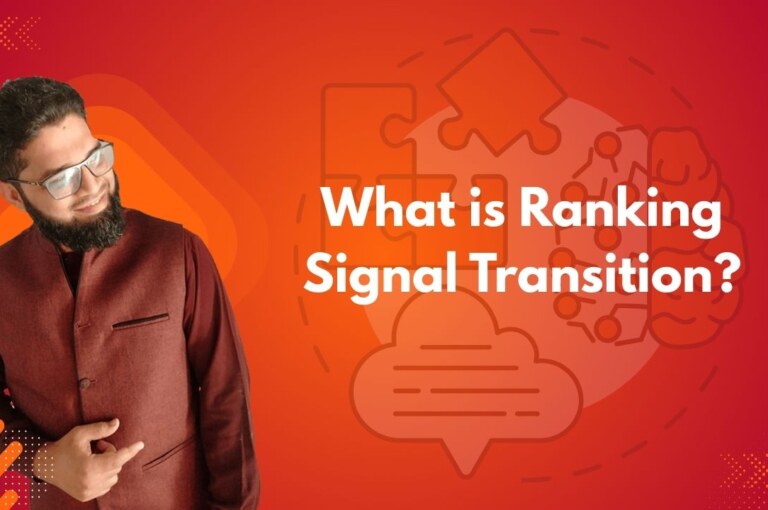A Ranking Signal Transition occurs when a search engine changes the factors it uses to rank content in search results.
These changes can be due to:
- Updates in the search algorithm
- Shifts in user behavior
- Adjustments in the importance of existing ranking signals
In simple terms: When Google starts caring more about one thing (like page speed) and less about another (like keyword density), that’s a ranking signal transition.
Search engines don’t stay the same. They evolve constantly—improving how they decide which content deserves to be seen first. A major part of this evolution is something called a Ranking Signal Transition.
Why Do Ranking Signal Transitions Happen?
Search engines like Google are always working to:
- Improve user experience
- Deliver more relevant content
- Stay ahead of manipulative SEO tactics
To do this, they constantly refine the ranking signals—the criteria they use to measure quality, relevance, and authority.
Real-World Examples of Ranking Signal Transitions (Google Search)
1. Mobile-First Indexing (2018–2021)
Google shifted from ranking websites based on their desktop version to their mobile version. Sites that weren’t mobile-friendly dropped in rankings.
2. Page Experience Update (2021)
Introduced Core Web Vitals (like LCP, FID, CLS) as key signals. Speed, interactivity, and visual stability became major ranking factors.
3. Helpful Content Update (2022)
Google de-emphasized AI-generated or keyword-stuffed content and began rewarding original, user-focused content that offers real value.
4. Link Signal Reduction (2023)
The power of backlinks was reduced. Instead, content relevance and E-E-A-T (Experience, Expertise, Authoritativeness, Trustworthiness) gained more weight.
5. AI & SGE Integration (2024–Present)
Google’s integration of AI-powered search experiences (SGE) led to new ranking dynamics. Contextual understanding and real-time query interpretation changed how content is surfaced.
Why Ranking Signal Transitions Matter!
Ranking signal transitions aren’t just technical changes—they can dramatically impact website traffic and visibility.
What Happens If You Don’t Adapt?
- Rankings drop
- Traffic declines
- Competitors who align with new signals take your place
What Happens If You Do?
- Higher search visibility
- Better engagement and UX
- Long-term SEO stability
How to Prepare for Ranking Signal Transitions!
- Follow Google updates and industry news (e.g., Search Central Blog, Moz, SEMrush).
- Optimize content for helpfulness, relevance, and clarity, not just for keywords.
- Monitor Core Web Vitals, mobile usability, and site structure.
- Ensure your pages offer real value, demonstrate expertise, and meet E-E-A-T standards.
- Shift from quantity to relevance and context in backlinks.
Wrap Up
Ranking Signal Transition refers to a change in what Google (or any search engine) values most when ranking pages.
These shifts impact how content performs in search. Major Google transitions include mobile-first indexing, Core Web Vitals, content quality signals, and AI integration.
To stay ahead, align your SEO strategy with Google’s evolving priorities.
Want to Go Deeper into SEO?
Explore more from my SEO knowledge base:
▪️ SEO & Content Marketing Hub — Learn how content builds authority and visibility
▪️ Search Engine Semantics Hub — A resource on entities, meaning, and search intent
▪️ Join My SEO Academy — Step-by-step guidance for beginners to advanced learners
Whether you’re learning, growing, or scaling, you’ll find everything you need to build real SEO skills.
Feeling stuck with your SEO strategy?
If you’re unclear on next steps, I’m offering a free one-on-one audit session to help and let’s get you moving forward.





Leave a comment